Some stocks are STRONG BUYS when they fall
Other stocks are SELLS when they fall
How can you tell the difference?
Here are 5 financial yellow flags to help you out...
Other stocks are SELLS when they fall
How can you tell the difference?
Here are 5 financial yellow flags to help you out...
1) GOODWILL
This represents the premium a company pays for an acquisition above its fair market value.
If there’s lots of goodwill on the balance sheet, that’s troubling
This represents the premium a company pays for an acquisition above its fair market value.
If there’s lots of goodwill on the balance sheet, that’s troubling
If there’s a major goodwill write-down on the balance sheet, it’s a smoking gun.
When this happens, it means management has wasted a TON of capital.
When this happens, it means management has wasted a TON of capital.
Recent example: Teledoc $TDOC
$14B was a lot in goodwill to begin with. A $6B write-down is awful, too.
Buying Livongo at its price tag = HUGE mistake
$14B was a lot in goodwill to begin with. A $6B write-down is awful, too.
Buying Livongo at its price tag = HUGE mistake
2) Gross Margin Declining
Gross margin = (sales) - (cost of goods sold).
If I run a lemonade stand, it’s (money I earn) - (the supplies to make lemonade)
Gross margin = (sales) - (cost of goods sold).
If I run a lemonade stand, it’s (money I earn) - (the supplies to make lemonade)
Declining gross margins could mean
 https://abs.twimg.com/emoji/v2/... draggable="false" alt="1⃣" title="Nummertoets een" aria-label="Emoji: Nummertoets een">The competition is eating away business and I lower prices
https://abs.twimg.com/emoji/v2/... draggable="false" alt="1⃣" title="Nummertoets een" aria-label="Emoji: Nummertoets een">The competition is eating away business and I lower prices
 https://abs.twimg.com/emoji/v2/... draggable="false" alt="2⃣" title="Nummertoets twee" aria-label="Emoji: Nummertoets twee">People aren’t that interested in my product anymore
https://abs.twimg.com/emoji/v2/... draggable="false" alt="2⃣" title="Nummertoets twee" aria-label="Emoji: Nummertoets twee">People aren’t that interested in my product anymore
Either way, it can be a thesis-busting development
Either way, it can be a thesis-busting development
Recent example: Beyond Meat $BYND
The company& #39;s gross margin has been cut in half.
Some of this has to do with product mix (consumer vs restaurant buying). But it& #39;s not the whole story.
Meatless-alternatives are EVERYWHERE now (for cheaper prices)
The company& #39;s gross margin has been cut in half.
Some of this has to do with product mix (consumer vs restaurant buying). But it& #39;s not the whole story.
Meatless-alternatives are EVERYWHERE now (for cheaper prices)
3) Deteriorating Balance Sheet
This includes:
- less cash
- more debt
- higher inventory
As this happens, a company becomes more fragile.
This includes:
- less cash
- more debt
- higher inventory
As this happens, a company becomes more fragile.
Recent example: Peloton $PTON
In the summer of 2020, it had
 https://abs.twimg.com/emoji/v2/... draggable="false" alt="💵" title="Bankbiljet met dollarteken" aria-label="Emoji: Bankbiljet met dollarteken">$1.8 billion in cash
https://abs.twimg.com/emoji/v2/... draggable="false" alt="💵" title="Bankbiljet met dollarteken" aria-label="Emoji: Bankbiljet met dollarteken">$1.8 billion in cash
 https://abs.twimg.com/emoji/v2/... draggable="false" alt="🔴" title="Rode cirkel" aria-label="Emoji: Rode cirkel">$0.5 billion in debt
https://abs.twimg.com/emoji/v2/... draggable="false" alt="🔴" title="Rode cirkel" aria-label="Emoji: Rode cirkel">$0.5 billion in debt
 https://abs.twimg.com/emoji/v2/... draggable="false" alt="🚲" title="Fiets" aria-label="Emoji: Fiets">$0.2 billion in inventory
https://abs.twimg.com/emoji/v2/... draggable="false" alt="🚲" title="Fiets" aria-label="Emoji: Fiets">$0.2 billion in inventory
Today
 https://abs.twimg.com/emoji/v2/... draggable="false" alt="💵" title="Bankbiljet met dollarteken" aria-label="Emoji: Bankbiljet met dollarteken">$0.9 billion in cash
https://abs.twimg.com/emoji/v2/... draggable="false" alt="💵" title="Bankbiljet met dollarteken" aria-label="Emoji: Bankbiljet met dollarteken">$0.9 billion in cash
 https://abs.twimg.com/emoji/v2/... draggable="false" alt="🔴" title="Rode cirkel" aria-label="Emoji: Rode cirkel">$0.9 billion in debt
https://abs.twimg.com/emoji/v2/... draggable="false" alt="🔴" title="Rode cirkel" aria-label="Emoji: Rode cirkel">$0.9 billion in debt
 https://abs.twimg.com/emoji/v2/... draggable="false" alt="🚲" title="Fiets" aria-label="Emoji: Fiets">$1.4 billion in inventory
https://abs.twimg.com/emoji/v2/... draggable="false" alt="🚲" title="Fiets" aria-label="Emoji: Fiets">$1.4 billion in inventory
In the summer of 2020, it had
Today
4) Excessive Stock-Based Compensation (SBC)
Lots of companies pay their employees with cash.
On the surface, that’s smart – no money leaves the company’s bank.
Shareholders are diluted, but if it results in better results from happy employees – that’s a fair trade.
Lots of companies pay their employees with cash.
On the surface, that’s smart – no money leaves the company’s bank.
Shareholders are diluted, but if it results in better results from happy employees – that’s a fair trade.
However, sometimes, that compensation gets out of control. The dilution becomes excessive.
It also presents a problem: if the stock tanks, employees may want to be paid in cash instead of stock -- leading to booming operating expenses.
It also presents a problem: if the stock tanks, employees may want to be paid in cash instead of stock -- leading to booming operating expenses.
Recent example: Twilio $TWLO
Over the past year, SBC = 20% of revenue.
And it& #39;s steadily rising over the past few years.
Over the past year, SBC = 20% of revenue.
And it& #39;s steadily rising over the past few years.
The result: the number of shares outstanding is up 121% since the company went public.
Some of this has to do with an acquisition. But either way, long-term shareholders now own less than half of what they paid for a few years back
Some of this has to do with an acquisition. But either way, long-term shareholders now own less than half of what they paid for a few years back
5) Net Income is MUCH higher than free cash flow
Remember:
Net income uses accrual accounting. This smooths things out over time.
Free cash flow uses cash accounting. This is a more realistic narrative of money flows
Remember:
Net income uses accrual accounting. This smooths things out over time.
Free cash flow uses cash accounting. This is a more realistic narrative of money flows
If a company has much higher net income, it’s possible a cash crunch is on the way, leading to fragility.
When tough times hit, you want cash on hand – not promised by someone who may-or-may-not pay you back
When tough times hit, you want cash on hand – not promised by someone who may-or-may-not pay you back
Recent example: Netflix $NFLX
Over the past year, it has
 https://abs.twimg.com/emoji/v2/... draggable="false" alt="🧮" title="Abacus" aria-label="Emoji: Abacus">Net income of $5.0 billion
https://abs.twimg.com/emoji/v2/... draggable="false" alt="🧮" title="Abacus" aria-label="Emoji: Abacus">Net income of $5.0 billion
 https://abs.twimg.com/emoji/v2/... draggable="false" alt="💰" title="Geldzak" aria-label="Emoji: Geldzak">Free cash flow of ($0.03 billion)
https://abs.twimg.com/emoji/v2/... draggable="false" alt="💰" title="Geldzak" aria-label="Emoji: Geldzak">Free cash flow of ($0.03 billion)
That& #39;s a difference of over $5 billion!
Over the past year, it has
That& #39;s a difference of over $5 billion!
The problem:
If things don& #39;t work out as planned, the accrual accounting can& #39;t save you.
And that& #39;s what& #39;s happening
 https://abs.twimg.com/emoji/v2/... draggable="false" alt="👉" title="Rug van hand met naar rechts wijzende wijsvinger" aria-label="Emoji: Rug van hand met naar rechts wijzende wijsvinger">Competition willing to spend big on content is heating up
https://abs.twimg.com/emoji/v2/... draggable="false" alt="👉" title="Rug van hand met naar rechts wijzende wijsvinger" aria-label="Emoji: Rug van hand met naar rechts wijzende wijsvinger">Competition willing to spend big on content is heating up
 https://abs.twimg.com/emoji/v2/... draggable="false" alt="👉" title="Rug van hand met naar rechts wijzende wijsvinger" aria-label="Emoji: Rug van hand met naar rechts wijzende wijsvinger">Subscribers are *leaving* the service
https://abs.twimg.com/emoji/v2/... draggable="false" alt="👉" title="Rug van hand met naar rechts wijzende wijsvinger" aria-label="Emoji: Rug van hand met naar rechts wijzende wijsvinger">Subscribers are *leaving* the service
If things don& #39;t work out as planned, the accrual accounting can& #39;t save you.
And that& #39;s what& #39;s happening
You MUST know how to find these yellow flags to be a long-term investor.
That& #39;s why @BrianFeroldi and I are excited to announce our first ever LIVE course:
The roster for open spots is only open for two more days!
Interested? DM me for a coupon code https://maven.com/brian-feroldi/financials">https://maven.com/brian-fer...
That& #39;s why @BrianFeroldi and I are excited to announce our first ever LIVE course:
The roster for open spots is only open for two more days!
Interested? DM me for a coupon code https://maven.com/brian-feroldi/financials">https://maven.com/brian-fer...
To review the 5 yellow flags
 https://abs.twimg.com/emoji/v2/... draggable="false" alt="🟡" title="Gele cirkel" aria-label="Emoji: Gele cirkel">Lots of goodwill
https://abs.twimg.com/emoji/v2/... draggable="false" alt="🟡" title="Gele cirkel" aria-label="Emoji: Gele cirkel">Lots of goodwill
 https://abs.twimg.com/emoji/v2/... draggable="false" alt="🟡" title="Gele cirkel" aria-label="Emoji: Gele cirkel">Gross margin declining
https://abs.twimg.com/emoji/v2/... draggable="false" alt="🟡" title="Gele cirkel" aria-label="Emoji: Gele cirkel">Gross margin declining
 https://abs.twimg.com/emoji/v2/... draggable="false" alt="🟡" title="Gele cirkel" aria-label="Emoji: Gele cirkel">Rapidly deteriorating balance sheet
https://abs.twimg.com/emoji/v2/... draggable="false" alt="🟡" title="Gele cirkel" aria-label="Emoji: Gele cirkel">Rapidly deteriorating balance sheet
 https://abs.twimg.com/emoji/v2/... draggable="false" alt="🟡" title="Gele cirkel" aria-label="Emoji: Gele cirkel">Excessive stock-based compensation
https://abs.twimg.com/emoji/v2/... draggable="false" alt="🟡" title="Gele cirkel" aria-label="Emoji: Gele cirkel">Excessive stock-based compensation
 https://abs.twimg.com/emoji/v2/... draggable="false" alt="🟡" title="Gele cirkel" aria-label="Emoji: Gele cirkel">Significantly more net income than free cash flow
https://abs.twimg.com/emoji/v2/... draggable="false" alt="🟡" title="Gele cirkel" aria-label="Emoji: Gele cirkel">Significantly more net income than free cash flow

 Read on Twitter
Read on Twitter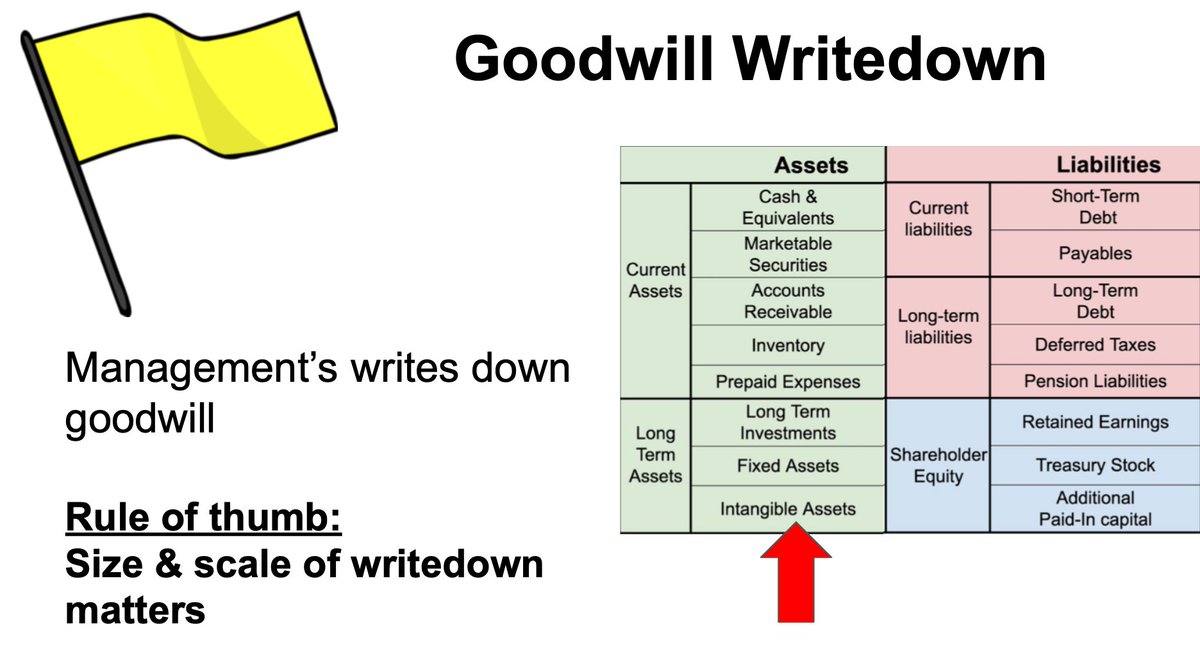

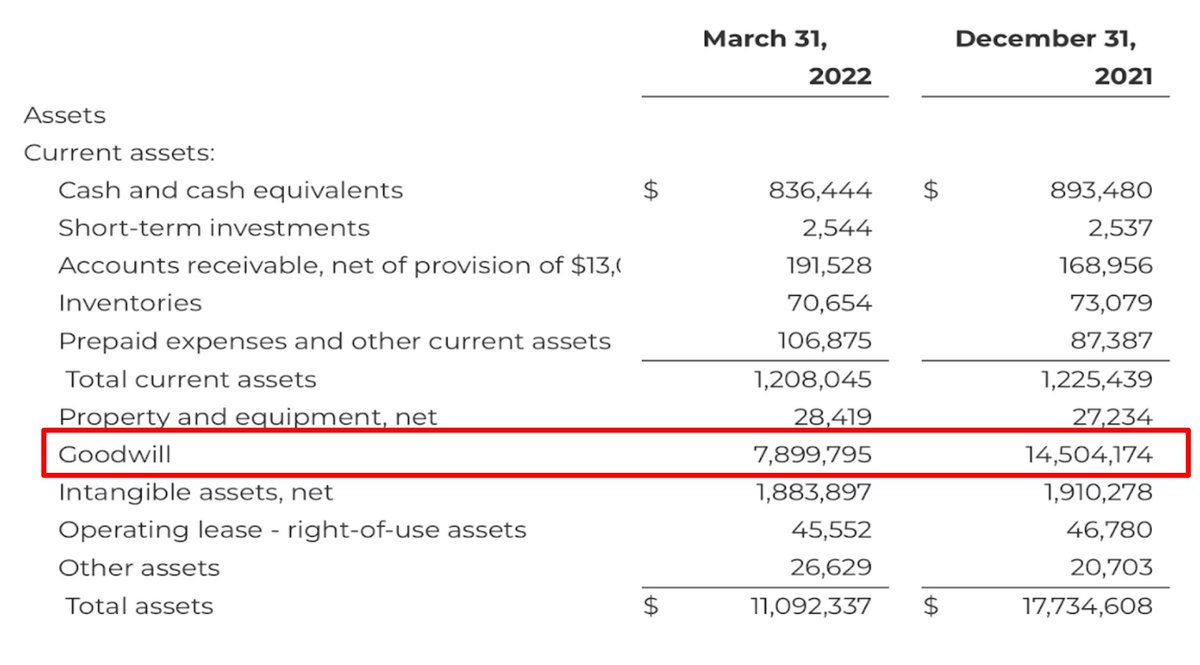
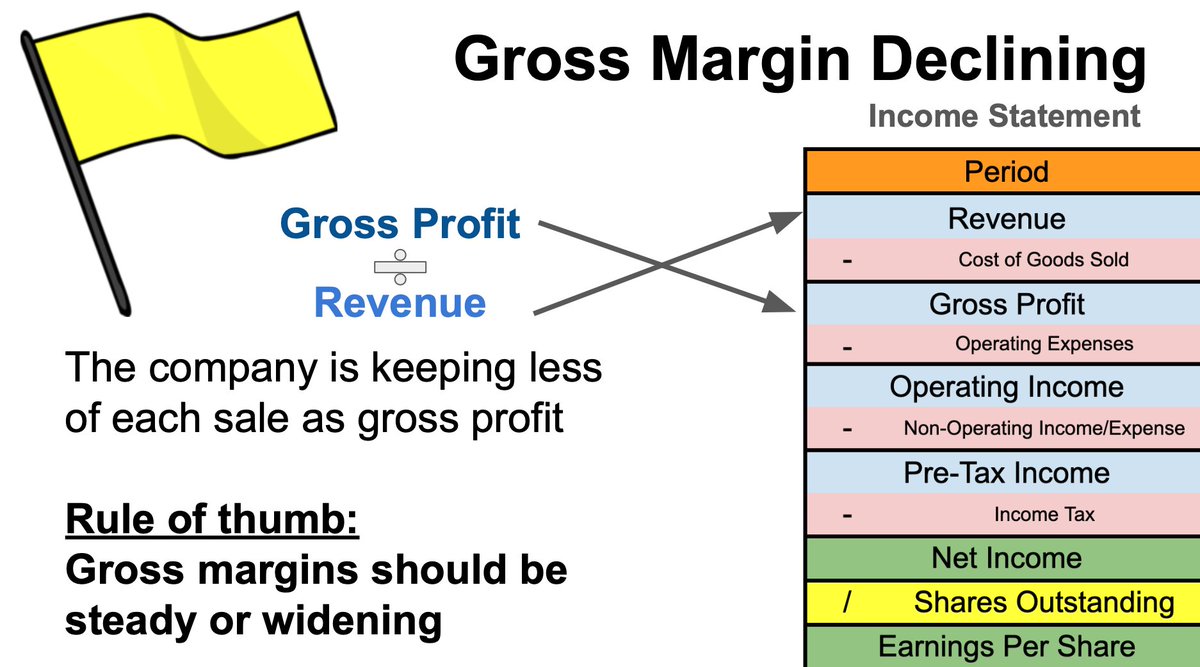
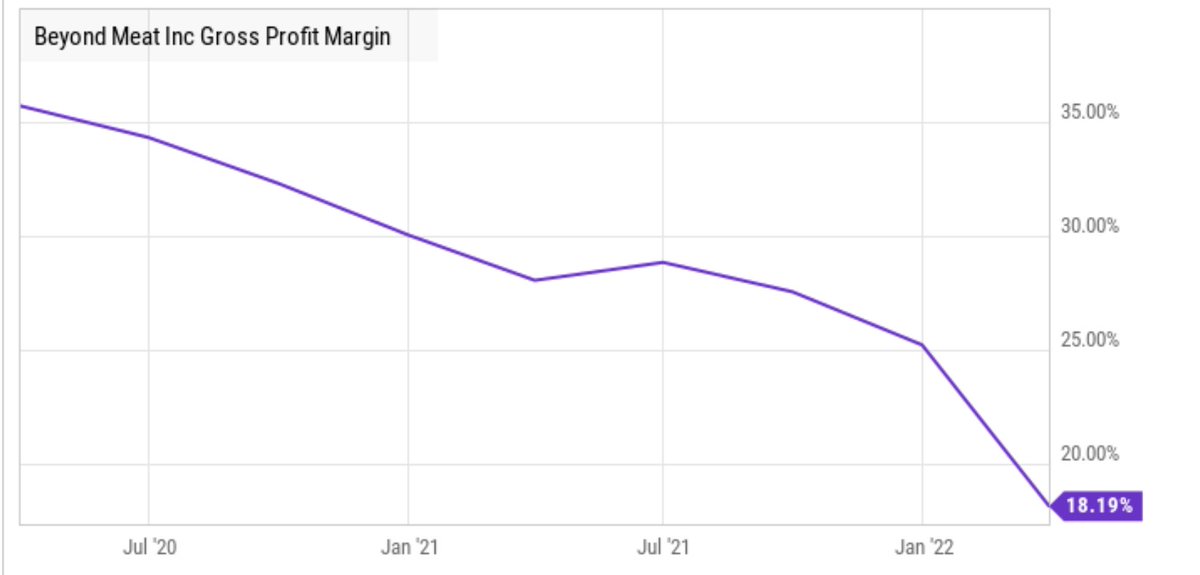
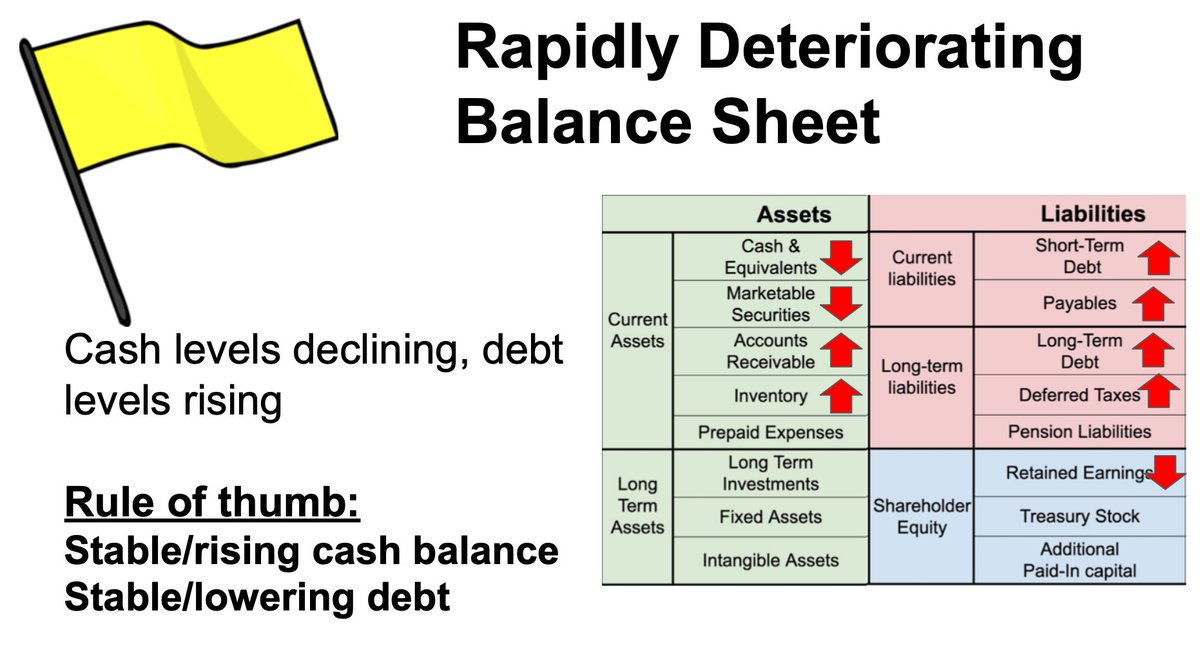
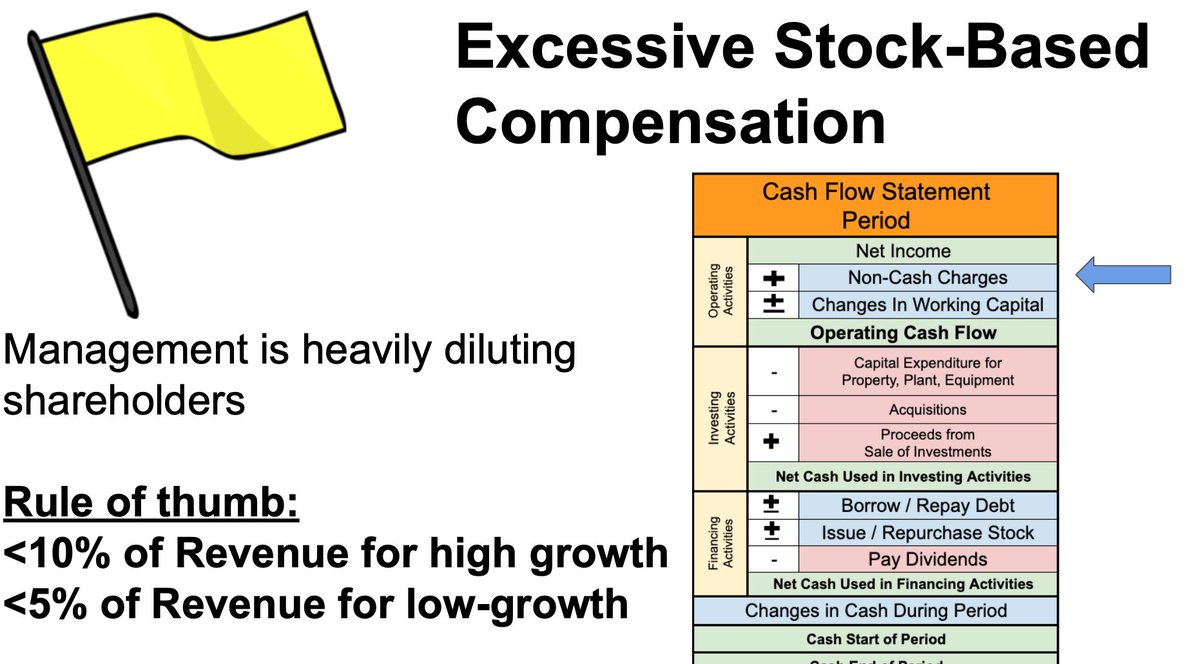
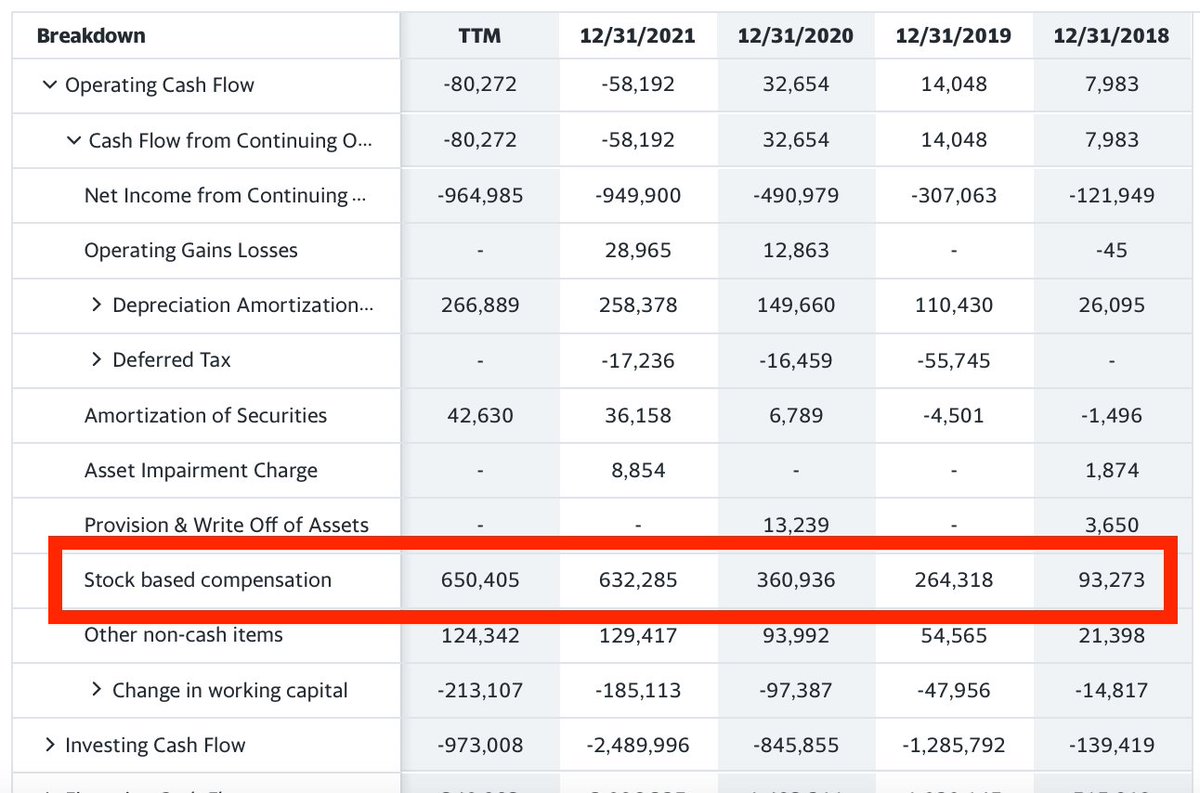
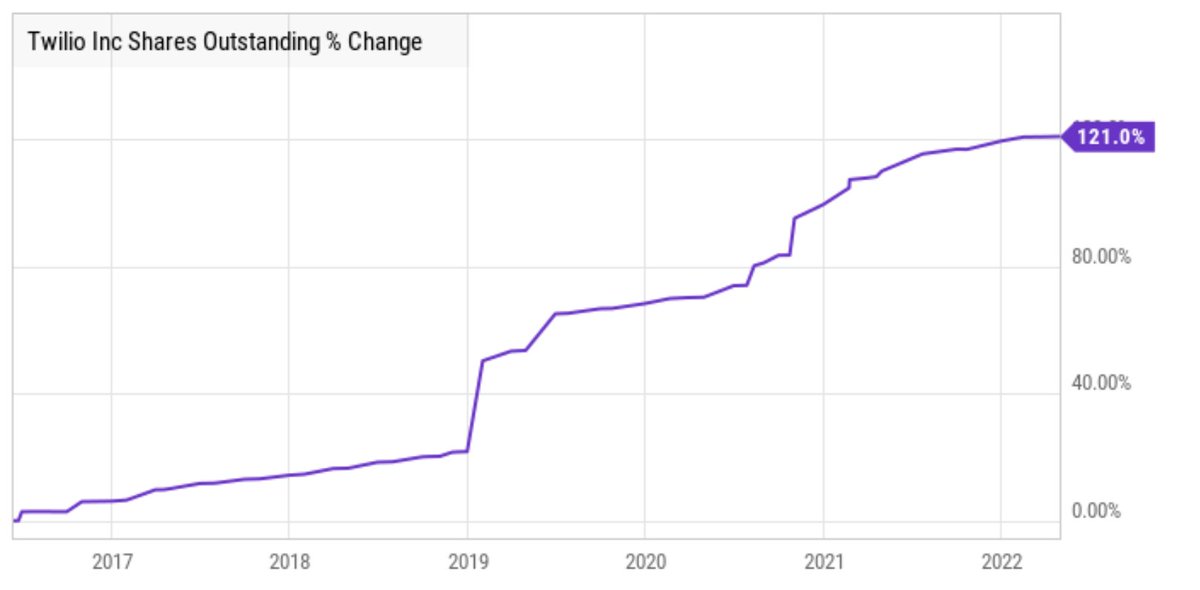
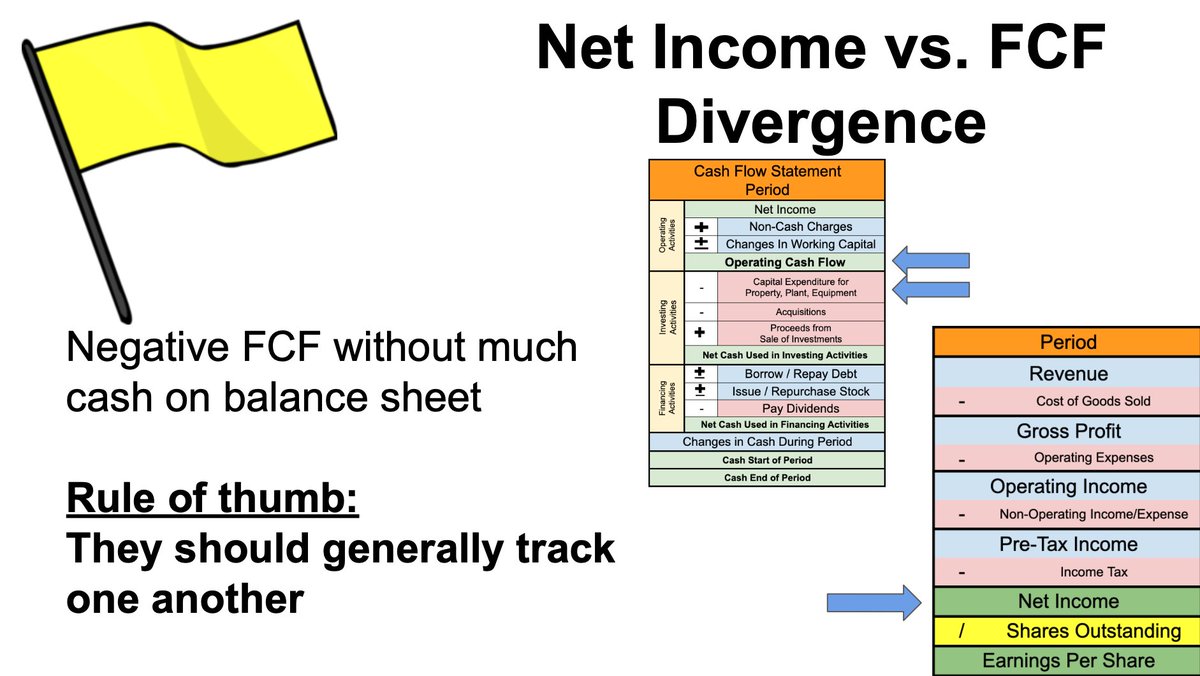
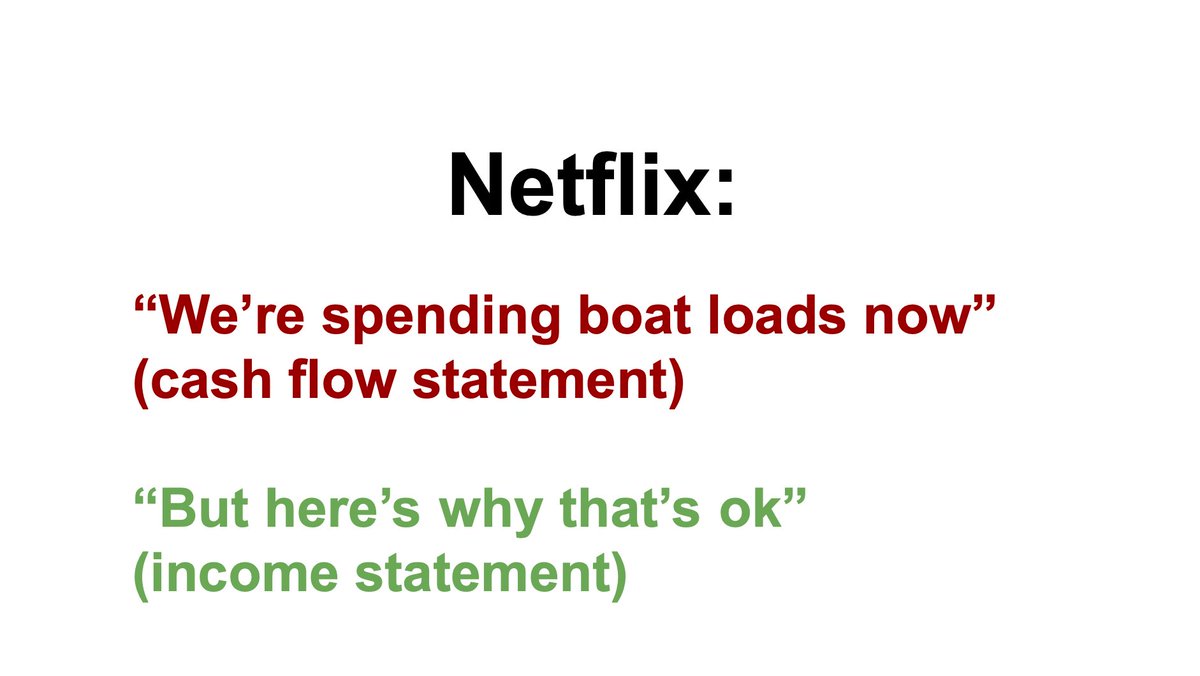 Net income of $5.0 billionhttps://abs.twimg.com/emoji/v2/... draggable="false" alt="💰" title="Geldzak" aria-label="Emoji: Geldzak">Free cash flow of ($0.03 billion)That& #39;s a difference of over $5 billion!" title="Recent example: Netflix $NFLXOver the past year, it hashttps://abs.twimg.com/emoji/v2/... draggable="false" alt="🧮" title="Abacus" aria-label="Emoji: Abacus">Net income of $5.0 billionhttps://abs.twimg.com/emoji/v2/... draggable="false" alt="💰" title="Geldzak" aria-label="Emoji: Geldzak">Free cash flow of ($0.03 billion)That& #39;s a difference of over $5 billion!" class="img-responsive" style="max-width:100%;"/>
Net income of $5.0 billionhttps://abs.twimg.com/emoji/v2/... draggable="false" alt="💰" title="Geldzak" aria-label="Emoji: Geldzak">Free cash flow of ($0.03 billion)That& #39;s a difference of over $5 billion!" title="Recent example: Netflix $NFLXOver the past year, it hashttps://abs.twimg.com/emoji/v2/... draggable="false" alt="🧮" title="Abacus" aria-label="Emoji: Abacus">Net income of $5.0 billionhttps://abs.twimg.com/emoji/v2/... draggable="false" alt="💰" title="Geldzak" aria-label="Emoji: Geldzak">Free cash flow of ($0.03 billion)That& #39;s a difference of over $5 billion!" class="img-responsive" style="max-width:100%;"/>


